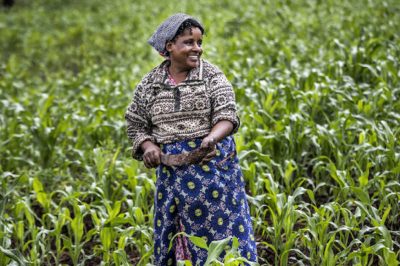The term “inclusive development” is nowadays finding its way into the development discourse. However, what constitutes inclusive development still needs to be clarified. There is no clear-cut definition of inclusive development, which is why it is most often used interchangeably with inclusive growth.
In order to better understand inclusive development, we first have to make a clear distinction between growth and development and differentiate inclusive development from related concepts.
Growth is something which can be measured through provided monetary measures, such as per capita income and GDP. While development is something beyond growth, it encompasses economic growth and emphasizes the socio-political and environmental rights of people.
It asserts that development not only focuses on the well-being of the people but also describes “the capacity of economic, political and social systems to provide the circumstances for that well-being on a sustainable and long-term basis”.
What is Inclusive Development?
Many scholars have tried to elaborate on inclusive development. For example, “it is a process that occurs when social and material benefits are equitably distributed across divides in society” (Hikey, 2015). From the provided definition, inclusive development focuses on including marginalized groups/people in the development process and sharing the fruits of development equitably with them.
“A society is judged by how it treats its most vulnerable members. We must prioritize the needs of the marginalized and disadvantaged” – Michelle Bachelet.
Another definition of inclusive development highlights that “inclusive development is development that includes marginalized people, sectors and countries in social, political and economic processes for increased human well-being, social and environmental sustainability, and empowerment” (Gupta J, Pouw. N, and Ros-Tonenb M. 2015).
Examining the Practical Realities: Inclusive Development in Africa
Over the past decade, Sub-Saharan African countries have recorded high economic growth. However, on actual grounds, reports suggest that a large number of poor and vulnerable people were excluded from the benefits of this development.
As the population is rising rapidly to around 2.5 billion by 2060, thus the region will have a young and increasingly urbanized workforce, which presents an opportunity to reap a ‘demographic dividend‘ (AfDB, 2014).
However, the region has also witnessed a higher rate of unemployment as around 389 million people in the region are still living at US$1.9 a day. Thus, these numbers have widened the gap of inequalities across the combined regions.
Also Read: U.S. launches Bokamoso Ba Bana project in South Africa
Scholars suggest that the growing number of young people in Africa possess a window of opportunity as this will increase labor force availability in the market. A large labor force will increase the overall productive capacity and will lead to savings and investment boosts.
Nevertheless, on the other hand, this large population growth is causing pressure on labor markets as providing jobs to the majority of the continent’s population is still a serious challenge in Sub-Saharan Africa (World Bank, Youth Employment in Sub-Saharan Africa).
Poverty Trap: Economic Growth as a Tool of Exclusion?
It is argued that economic growth is necessary for substantial reductions in monetary poverty, but it is not enough for improving the welfare of the population at large. Economic growth mainly focuses on a country’s overall growth in monetary terms, as discussed above.
In the case of Africa, the economic gains were seen as uneven across different regions and countries; as the Afro barometer highlighted, “there is little change at the grassroots level” (Sy, 2014).
The fruits of growth are mainly distributed in the capital cities, while poverty is widespread across the countryside (Namata, 2015). This is the reason behind calling the economic growth of Sub-Saharan Africa a “jobless growth”.
Jobless Growth in Africa
As discussed lately, the growing population in Africa is causing challenges in generating jobs in markets. A number of jobs created are concentrated in the urban areas, mainly the capital cities, which is leading towards competition for limited employment opportunities and exacerbating urban employment rates.
Collier called this phenomenon a “poverty trap” as a tool of exclusion, as the rural poor are the most vulnerable to be affected by this exclusive distribution of opportunities. He further calls for addressing this issue at the grassroots level by taking into account human development indicators such as education, health and employment opportunities.
Towards Inclusive Development: Addressing Poverty and Fostering Social Cohesion
Lastly, Sen (1999) argues that “poverty is a deprivation of capabilities and thus of the substantive freedoms people need in order to live the kinds of lives they value”. Thus, the poorer the individual, the less their participation and capability to capitalize on opportunities.
For inclusive development, countries must adopt the pro-poor growth approach and trickle-down growth to the underprivileged. As development discourse highlights the inclusion of all in the process and equitably sharing of the outputs, it results in safer and more stable societies that meet the essential conditions for economic transformation and growth, as well as high levels of productive employment and social cohesion.

A student of Governance and Public Policy, passionate about exploring world affairs, geopolitics, and diplomatic intricacies. Also through insightful research, aiming to contribute to global governance and diplomacy.








